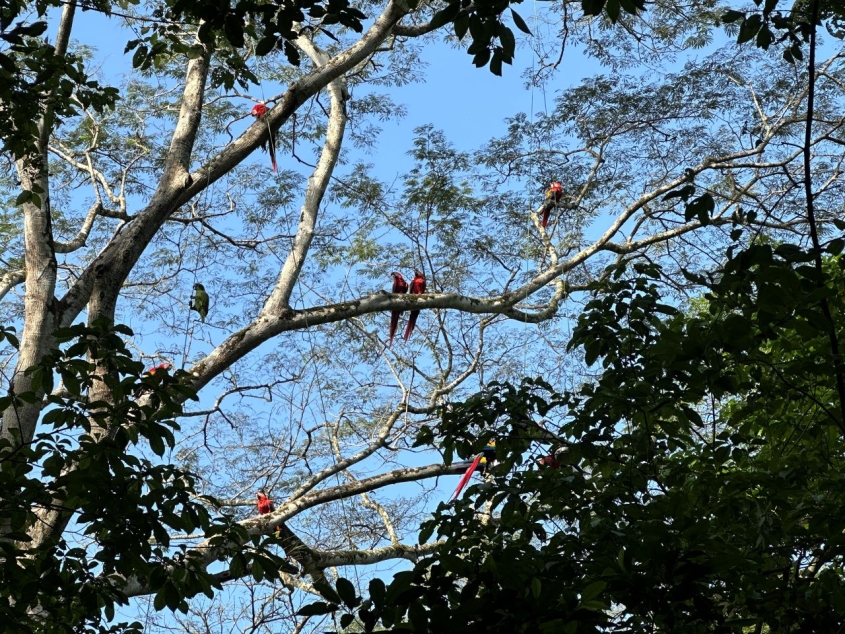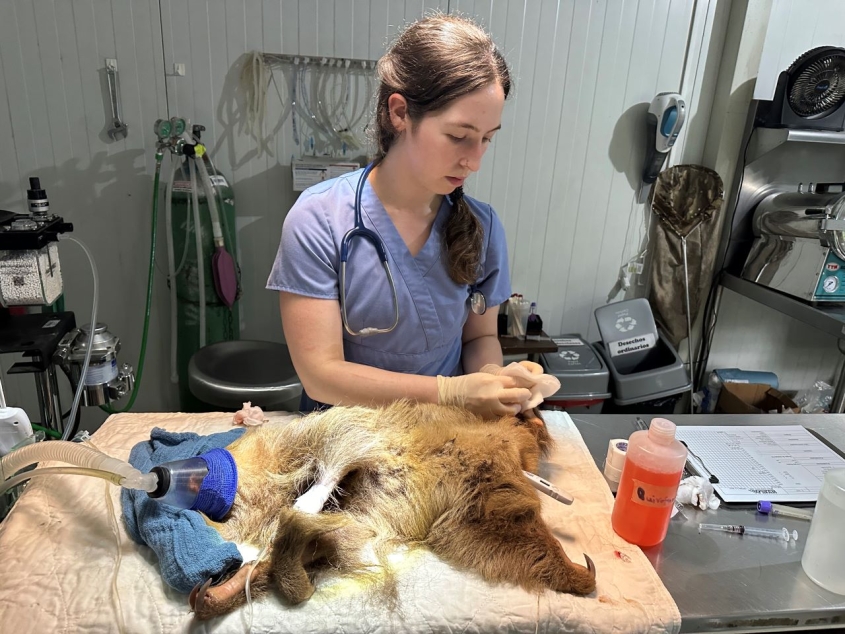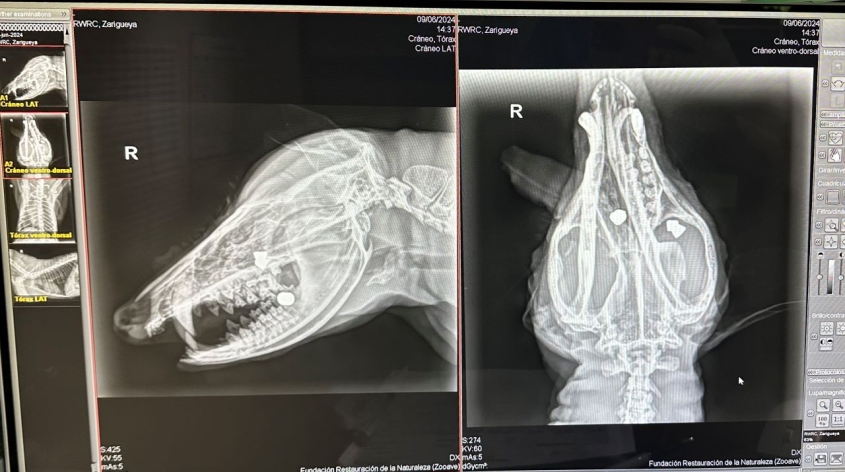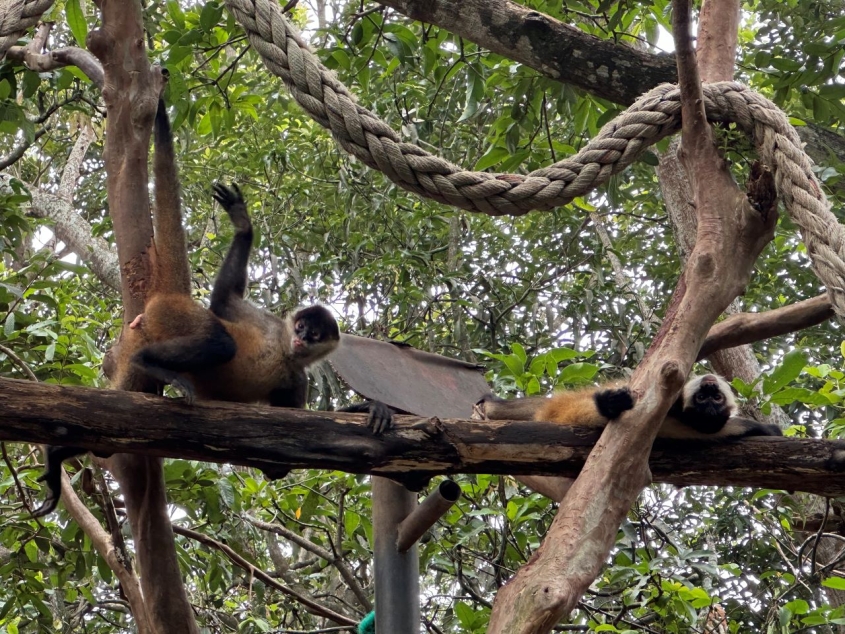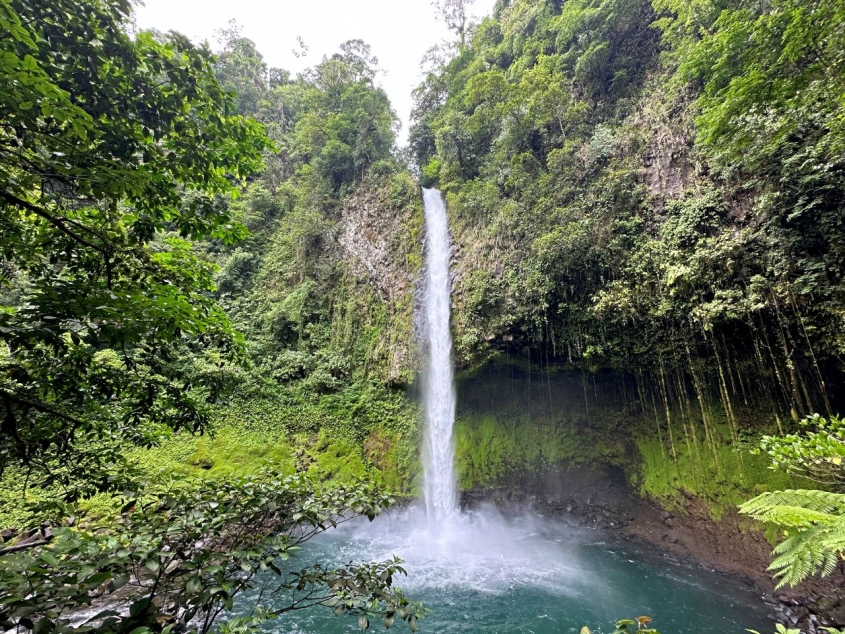Student blog: Conservation of wild psittacines in Costa Rica
Costa Rica, a haven for countless species of plants and animals, holds approximately 6% of the world’s biodiversity, despite taking up only 0.03% of the earth’s surface. Known for its rich biodiversity, Costa Rica has unfortunately been facing a decline in fauna and flora due to climate change, local deforestation, development and poaching for the pet trade.
Rescate Wildlife Rescue Center aims to protect and restore the country’s biodiversity through wildlife rehabilitation, endangered species breeding, habitat preservation and care for non-releasable animals. This summer, I spent eight weeks at their sanctuary in Alajuela, Costa Rica, thanks to the generous funding through Cornell CVM’s Expanding Horizons International Education Program.
During this time, I collaborated with caregivers in the lifetime care sanctuary (home to 1,000 non-releasable animals) and breeding center, worked with veterinarians at the on-site veterinary clinic, and assisted with releasing and monitoring endangered species at a release site as a research assistant — thereby experiencing the full cycle of wildlife conservation: rescue, rehabilitation, breeding, research and release.
The sanctuary and breeding center
Since the sanctuary animals cannot be released, they require special care to ensure the ability to express their natural behaviors in captivity. Rescate emphasizes the importance of a natural environment in captivity, so much of my time was spent foraging for natural foods and creating enrichment using natural materials. I also helped with behavioral data collection for Pili the jaguar and a group of spider monkeys.
I also spent time in the breeding center with over 200 parrots, including scarlet macaws and critically endangered great green macaws. Here, I assisted in a diet trial study and collected data on growing chicks. Though I have prior experience with birds, this certainly raised my comfort level with and interest in working with wild psittacines.
The rehabilitation center and clinic
The rehabilitation center employs three full-time veterinarians and a fully equipped veterinary clinic, where approximately 3,000 animals are admitted each year. Every day for two weeks, I assisted with the intake of animals ranging from injured songbirds to orphaned sloths and followed these cases through treatment or release. One case that has stayed with me was that of an adult opossum who was shot in the head twice and brought in by a caring neighbor. In Costa Rica, opossums are often perceived as pests and wind up injured or orphaned. Upon intake, I doubted the opossum would recover. However, the veterinarians removed the bullets and one injured eye, after which the opossum recovered well, and was released back to the wild during my time at the rescue center.
While working through cases, I was encouraged to think like a doctor - interpreting radiographs and blood panels, coming up with differential diagnoses, treatment plans, and researching procedures before they were performed. I also had the opportunity for hands-on practice with monitoring anesthesia, performing physical exams, necropsy, and drawing blood from a variety of different species. My time in the clinic taught me to think critically about animals that I have never worked with before, an important skill for someone wanting to devote their life to exotic animal care.
Bosque Escondido
Rescate has two additional release sites for rehabilitated and rescued animals: Bosque Escondido and Golfito. I spent five weeks in Bosque Escondido in the tropical forest performing field work in association with The Macaw Society, a long-term research project studying the ecology and conservation of parrots in Costa Rica and Peru. At this site, scarlet macaws, yellow-naped parrots, orange-chinned parakeets, and orange-fronted parakeets are monitored and released to a natural reserve.
Previously, I thought that “release” meant releasing the animal into a suitable environment. However, for animals with complex social groups like parrots, or some animals raised in captivity, this is certainly not the case. These animals have a much higher post-release survival rate when they are put through a “soft-release” process, which may include acclimating the animal to the release environment, social group, natural foods, and more. With the increasing need for releasing captive-raised animals to the wild, research in these areas is vital.
A typical day at Bosque Escondido started at 5:30am (which took some getting used to), and included hiking, collecting data, foraging for natural foods, creating enrichment, helping with a release, and more. I often started my day with an hour-long cage observation of caged birds or a feeder survey of wild and released birds, which gave me the rewarding opportunity to see many macaws and amazon parrots thriving in the wild. I was also able to help with nest checks of the only successful scarlet macaw nest at the reserve this year, collecting data on anatomical features, body condition, etc., on the adorable chicks.
Beyond these fascinating experiences, I also had the chance to collect general cumulative data on pre-release behaviors and released bird re-sightings and assist in the release of two groups of parakeets. I also assisted in exploring the effects of human aversion training on amazon parrots and in a feeder reliance study. Human aversion training is a form of pre-release training intended to discourage birds from seeking out humans following release. For example, a human would approach a pre-release bird and if they do not avoid the human, they are faced with a negative stimulus such as a flag being waved at them to encourage them to move. No animals were harmed in the process. The feeder reliance survey took into consideration the number of birds visiting a site with the leftover food to calculate roughly how much of their food intake was supplemented at feeder sites. Overall, seeing the animals in the wild is remarkable and knowing that I helped get them there was so rewarding.
Traveling
When I was not working, I took nearly every opportunity I could to travel. In my time here, I was able to visit Monteverde, La Fortuna, Samara, Montezuma and more. I especially enjoyed my trip to La Fortuna, where our driver took us to great local spots for swimming and hot springs. Towards the end of my stay, we also went on a kayaking tour of the bioluminescent algae, preceded by the most beautiful sunset I have ever seen.
I would like to thank the Expanding Horizons International Education Program again for their generous funding of this project. I would also like to recognize Rescate Wildlife Rescue Center and their wonderful managers and veterinarians, especially Dr. Sara Goñi Martinez for her enthusiasm and mentorship. Additionally, The Macaw Society, Roshan, and Toni for all their hard work, humor and kindness at Bosque.
Elizabeth Poirier, class of 2026, is a third-year D.V.M. student at Cornell University College of Veterinary Medicine. She is from Rhode Island and received her B.S. in Animal Science from University of Massachusetts - Amherst in 2022. She is interested in pursuing a specialization in companion exotic medicine and has a desire to contribute to veterinary care abroad during her career. Photo: Carol Jennings



